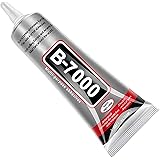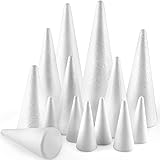The Ultimate Guide to DIY Cleaning Hacks for a Sparkling Home
Are you tired of spending a fortune on an array of specialized cleaning products that promise much but sometimes deliver less? Perhaps you are seeking more natural and budget-friendly alternatives to keep your living space pristine. The video above, featuring cleaning expert Melissa Maker, offers fantastic insights into creating effective homemade cleaners with everyday ingredients.
This article delves deeper into effective, budget-friendly DIY cleaning hacks, providing simple explanations and expanding upon the practical advice shared in the video. You can discover how common household items like white vinegar, baking soda, and dish soap can be transformed into powerful cleaning agents, saving both your money and the environment. Prepare to revolutionize your cleaning routine with these accessible and impactful methods.
Crafting Your Own Versatile Cleaning Solutions
It is often thought that a multitude of specific products are needed for a truly clean home. However, many common messes can be tackled with just a few simple, homemade solutions. These DIY cleaning hacks are designed for ease of use and safety, proving that effective cleaning does not need to be complicated or expensive.
An Everyday All-Purpose Cleaner
The foundation of a good cleaning routine often starts with a reliable all-purpose cleaner. A simple concoction of pH-neutral dish soap, water, and a touch of essential oil can address most surfaces in your home. It has been observed that roughly two cups of water are combined with about a teaspoon of dish soap in a sturdy spray bottle for this essential mixture. Adding the soap after the water is advised; this prevents excessive bubbling that can occur if the order is reversed.
Imagine if your everyday kitchen counters, dusty shelves, and cabinet fronts could be cleaned effectively with just one safe, homemade spray. This solution is gentle enough for regular use, lifting dirt and grime without leaving harsh chemical residues. Approximately five drops of a favorite essential oil, such as lavender, are typically added to provide a pleasant aroma. This mixture is shaken well and then applied directly to surfaces, allowed to sit for a moment, and then wiped clean. The use of a pH-neutral soap is considered safe for most household materials, ensuring no damage occurs during regular cleaning.
Achieving Streak-Free Glass with a DIY Cleaner
For years, many individuals have purchased blue-tinted glass cleaners, assuming they are the only way to achieve a perfect shine. However, a highly effective and far more economical alternative exists. A blend of equal parts white vinegar and water is often prepared, making an outstanding glass cleaner that leaves no streaks behind.
This simple glass cleaning solution is frequently enhanced with a few drops of peppermint essential oil, which offers a refreshing scent without compromising effectiveness. It is a common misconception that essential oils, being oily, might leave streaks on glass. However, it is understood that the minute quantity used in a cleaning solution is insufficient to cause any streaking. Instead, the type of cloth employed is often the most significant factor in achieving a streak-free finish. A flat-weave microfiber cloth is highly recommended for such tasks because it prevents lint and effectively removes all residue, allowing the natural cleaning power of vinegar to truly shine.
Gentle Hardwood Floor Care
It is commonly believed that hard floors require frequent mopping, but expert advice often suggests that sweeping or vacuuming regularly, followed by spot cleaning, is usually sufficient. Over-mopping can sometimes affect the finish and longevity of hardwood floors. However, periodic mopping is crucial for removing stubborn dirt and oils that accumulate over time. When deep cleaning is required, a carefully balanced homemade solution can be used to protect the floor’s integrity.
A recommended recipe involves combining two cups of water with a quarter cup of white vinegar, which is known for its dirt and oil-lifting properties. It is important to note that too much vinegar can be detrimental to hardwood, so precision is key. A half teaspoon of dish soap is also incorporated, acting as a surfactant to help lift debris to the surface. Care must be taken to avoid an excess of soap, as this can leave a sticky film on the floor. A few drops of essential oil, such as orange, are often added for a pleasant fragrance. This solution is applied section by section and cleaned with a microfiber pad mop, using a W-pattern to work along the grain and out of the room, ensuring a thorough yet gentle clean.
A Reliable Tub & Tile Cleaner
Soap scum can be a challenging foe in bathrooms, often requiring potent and expensive commercial cleaners. Fortunately, a powerful and cost-effective DIY cleaning hack is available for tackling this common issue. A simple mixture comprising a half cup of white vinegar and a half cup of dish soap is highly effective at dissolving stubborn soap scum.
This inexpensive recipe is frequently enhanced with a few drops of essential oils, not only for a fresher scent but also for their potential additional cleaning properties. Once thoroughly shaken, this solution is sprayed into the bathtub or onto tiles, allowing it to penetrate the grime. The surface is then gently scrubbed with a non-scratching sponge, particularly important for acrylic tubs, and rinsed well. A final buffing dry is often performed to achieve a beautiful, sparkling shine, leaving surfaces incredibly clean and free of residue.
The Power of Baking Soda in Homemade Cleaners
Baking soda, a humble kitchen staple, is an incredibly versatile and powerful ingredient in the realm of DIY cleaning hacks. Its efficacy stems from three primary attributes: it is a potent deodorizer, provides mild abrasion, and acts as a whitener and brightener. These combined properties make it an indispensable component for tackling various cleaning challenges throughout the home.
Conquering Microwave Messes
Explosions of food, such as a crusty lasagna incident, are not uncommon in microwaves, leaving behind stubborn, baked-on messes. An effortless method exists for cleaning these challenging spills using baking soda. A cup of water is combined with two tablespoons of baking soda in a microwave-safe bowl, and this mixture is microwaved for five minutes. During this time, the steam generated helps transport tiny granules of baking soda onto the microwave’s interior surfaces.
Once the five minutes have passed, the bowl is carefully removed. The inside of the microwave can then be effortlessly wiped down with a cloth. The mild abrasion provided by the baking soda, softened by the steam, assists in lifting off the accumulated dirt and helps remove staining. Furthermore, the baking soda contributes its deodorizing power, neutralizing any lingering food odors, making the microwave both visually and aromatically clean.
Inconspicuous Home Deodorizer
For those persistent, unpleasant smells in specific corners of your home, baking soda offers a simple and “set it and forget it” solution. An old candle jar or any small container can be filled about halfway with baking soda. For an added touch, 5 to 10 drops of your favorite essential oil can be included, although this step is entirely optional.
This small container is then strategically placed in the smelly area. Baking soda is exceptional at absorbing and neutralizing odors rather than just masking them. It silently works its magic, drawing out and eliminating unwanted smells, providing a continuously fresh environment without any effort on your part. Imagine a pet area or a shoe closet staying fresh with this simple, hidden solution.
Tackling Stinky Toilets
Unpleasant toilet odors are a common household problem that can be effectively addressed with baking soda. Before commencing your regular bathroom cleaning routine, a cup of baking soda can be utilized as a powerful pre-cleaner. The toilet bowl brush is used to moisten the sides of the bowl with a little water, preparing the surface for treatment.
Baking soda is then generously sprinkled around the sides of the bowl, with the remaining amount dumped directly into the toilet water. While you proceed with the rest of your bathroom cleaning, the baking soda is allowed to work for approximately 30 minutes, actively deodorizing and tackling any built-up issues. After this period, the toilet is scrubbed clean and flushed. A final clean with your usual toilet bowl solution will then complete the process, ensuring a thoroughly clean and odor-free toilet bowl.
Removing Film and Residue from Glass Surfaces
Glass surfaces around the home, such as shower doors or tabletop inserts, can sometimes develop a stubborn film, stickiness, or residue that proves difficult to remove. Baking soda, with its mild abrasive properties, is perfectly suited for this task. A microfiber cloth is first dampened, and then approximately a teaspoon of baking soda is sprinkled onto it, though no exact measurement is strictly required.
The glass surface is then cleaned using an S-pattern, which helps to efficiently lift and remove the film from top to bottom. It is expected that some residue from the baking soda will be left behind after this initial pass. A quick rinsing wipe-down is then performed to clear this residue. Subsequently, the glass can be treated with your preferred glass cleaner, such as the homemade vinegar and water solution, applied with a flat-weave microfiber cloth for a final streak-free finish.
A Dish Washing Wonder
For those who hand wash dishes, baking soda can significantly enhance the cleaning process, making stubborn food residues easier to remove. The sink is filled with warm water as usual, and your normal squirt of dish soap is added. Crucially, two tablespoons of baking soda are then incorporated into the dishwater. Dishes, pots, and pans are allowed to soak in this solution for about 10 to 15 minutes.
When washing begins, it is often noticed that dirt and food particles slide off with remarkable ease. For particularly tough spots on pots and pans, a small amount of baking soda can be directly applied to boost the abrasion, accelerating the cleaning process. This simple addition makes hand washing dishes a much less strenuous task, ensuring a more thorough clean with less effort.
Harnessing White Vinegar for Natural Cleaning Solutions
White vinegar is celebrated in the cleaning world for its impressive ability to degrease and deodorize, making it another cornerstone of effective DIY cleaning hacks. Its superpower, however, lies in its acidity, which means careful consideration must be given to the surfaces it is used on. Understanding where vinegar is safe and where it should be avoided is crucial for successful and damage-free cleaning.
Sparkling Windows and Mirrors
One of the earliest and most popular applications for vinegar in cleaning is for windows, mirrors, and other glass surfaces. Its effectiveness is attributed to its excellent grease-cutting properties and its reputation for leaving no streaks. While ammonia-based cleaners are also popular for streak-free results, vinegar offers a significantly cheaper and more readily available alternative that performs just as well. A simple mixture of equal parts water and white vinegar, sprayed onto the surface and wiped with a flat-weave microfiber cloth using an S-pattern, consistently yields a beautiful, streak-free shine. This easy method makes regular glass maintenance a breeze.
Protecting Stone Countertops
Despite its many benefits, vinegar is not suitable for all surfaces. It is often seen that people consider using vinegar on their countertops, especially those made of natural stone like marble, granite, or quartz. However, stone countertops do not react well to acids. If vinegar is applied, it can lead to etching, which manifests as discoloration or dull spots in the stone. Over time, this etching can cause pitting or even contribute to cracking, resulting in an uneven and damaged finish. Therefore, it is strongly advised that vinegar be avoided when cleaning stone countertops to preserve their appearance and integrity.
Deodorizing Drains Effectively
Smelly drains are a common nuisance, and a popular DIY cleaning hack involves using vinegar to help break down odor-causing buildup. A method often employed is to first pour a cup of baking soda down the drain, allowing it to sit and absorb odors. Following this, boiling vinegar is poured down the drain, creating a reaction with the baking soda that is visually similar to a science experiment volcano. This reaction can help dislodge some buildup and further deodorize the drain.
While this method can offer temporary relief for general drain maintenance, perhaps once a month or every few months, it is important to recognize its limitations. If a drain has an ongoing or severe odor issue, it may indicate a larger problem that requires a commercial product or the intervention of a plumber. Additionally, it is often recommended that one should exercise caution when pouring boiling hot liquids down drains, especially if plastic pipes are present. Consulting a plumber if uncomfortable with this method is always a sensible approach.
The Truth About Mixing Vinegar and Baking Soda
For a long time, the combination of vinegar and baking soda was touted as a super-cleaner. However, a better understanding of chemistry reveals a different story. When vinegar (an acid) and baking soda (a base) are mixed, they neutralize each other. The result is essentially diluted salt water, which, from a cleaning perspective, does not offer the powerful benefits of either ingredient alone. This is an important distinction for anyone relying on DIY cleaning hacks.
If the cleaning benefits of both vinegar and baking soda are desired, it is recommended that they be used in tandem rather than mixed. For example, one ingredient can be applied, allowed to work, and then thoroughly rinsed away before the second ingredient is introduced. This ensures that the unique properties of each ingredient are fully utilized without being canceled out, allowing for a truly effective cleaning process.
Polishing Stainless Steel Appliances
Stainless steel appliances are a popular choice in modern kitchens, but they are notorious for showing fingerprints and smudges. Vinegar proves to be quite effective at cleaning stainless steel, particularly for removing these unsightly marks. A standard approach involves mixing equal parts water and white vinegar, creating a gentle yet powerful solution. This mixture is sprayed onto the appliance, allowed to sit briefly, and then wiped down.
The cleaning of stainless steel should be approached similarly to cleaning glass. A flat-weave microfiber cloth is used to avoid scratching the surface. An S-pattern is then employed to work the cleaner across the appliance, ensuring an even and streak-free finish. For areas with concentrated fingerprints, such as around handles, extra attention can be given by focusing the cloth with a finger. This method consistently leaves stainless steel with a beautiful, polished appearance, making it a valuable addition to your DIY cleaning hacks arsenal.
Refreshing Refrigerator Interiors
Over time, the interior of a refrigerator can absorb various food odors, largely because the plastic lining is porous. This makes the refrigerator an ideal application for vinegar, a renowned deodorizer. There are a couple of practical ways to incorporate vinegar into the fridge cleaning routine, ensuring a fresh and odor-free environment.
For a thorough clean, all items, shelves, and drawers can be removed from the refrigerator. These components can then be washed in the sink using a mixture of a tablespoon of dish soap, a cup of vinegar, and a cup of water, scrubbing and rinsing well. For the interior plastic lining of the fridge itself, after any visible marks or buildup have been cleaned with soap and water, a deodorizing punch can be delivered. This involves wiping down the inside with plain white vinegar (using a cloth dipped in a bowl or spritzing from a spray bottle), letting it sit for a few minutes, and then performing a rinsing wipe. Any lingering vinegar smell will dissipate as it neutralizes the absorbed odors, leaving a truly fresh interior.
Effortless Descaling of Kettles and Coffee Makers
The white, crusty buildup often observed inside kettles and coffee makers is limescale, caused by hard water minerals. Vinegar is an exceptional descaler, making this a high-impact cleaning task with remarkably low effort. For a kettle, vinegar is simply poured up to the maximum fill line, and then the kettle is boiled. Once boiled, the vinegar is discarded, and the kettle is rinsed. A subsequent boil with fresh water is often recommended to remove any lingering vinegar flavor, ensuring your next cup of tea or coffee tastes as it should. This method is a favorite among DIY cleaning hacks for its simplicity and effectiveness.
Removing Stubborn Hard Water Stains
Hard water is a common issue in many areas, identifiable by the rapid buildup of white crust in bathrooms and kitchens, or brown/rust-colored stains in toilets. White vinegar is effective at removing these hard water stains, though consistent effort is sometimes required. For faucets and areas around taps with buildup, a bag can be filled halfway with white vinegar and secured around the fixture with an elastic band, allowing it to soak. This method is also suitable for showerheads.
For hard water stains in toilets, excess water can be pushed down the chute with a toilet brush. Vinegar is then repeatedly sprayed or poured into the bowl, and allowed to sit. In some cases, extra-strength cleaning vinegar, which contains a higher percentage of acetic acid (between 6% and 10%), may be employed for more stubborn stains. It is reassuring to know that a mixture of vinegar and water is considered safe for matte black finishes in bathrooms, as it is non-abrasive. However, if any doubt exists, checking with the manufacturer is always a prudent step to take.
Managing the Smell of Vinegar
One common concern regarding vinegar-based DIY cleaning hacks is its distinct, often disliked smell. Fortunately, several strategies can make cleaning with vinegar more tolerable. Simple solutions include wearing a mask during cleaning and ensuring good ventilation by opening windows or using an air purifier. The smell of vinegar is known to dissipate over time, but these steps can accelerate the process and make the experience more pleasant.
To mask the odor, 10 to 20 drops of a favorite essential oil, such as peppermint or orange, can be added directly to the vinegar in a spray bottle or container. While this will create an orange or peppermint-scented vinegar, it significantly reduces the pungent smell. For a more deeply infused scent, citrus peels (from oranges, lemons, or limes) can be placed in a Mason jar, filled with vinegar, and allowed to steep in a dark place for about three weeks. After straining the peels, the resulting citrus-scented vinegar is potent and can be used in various cleaning recipes, diluted or straight, offering a more agreeable aroma while retaining its powerful cleaning properties.







